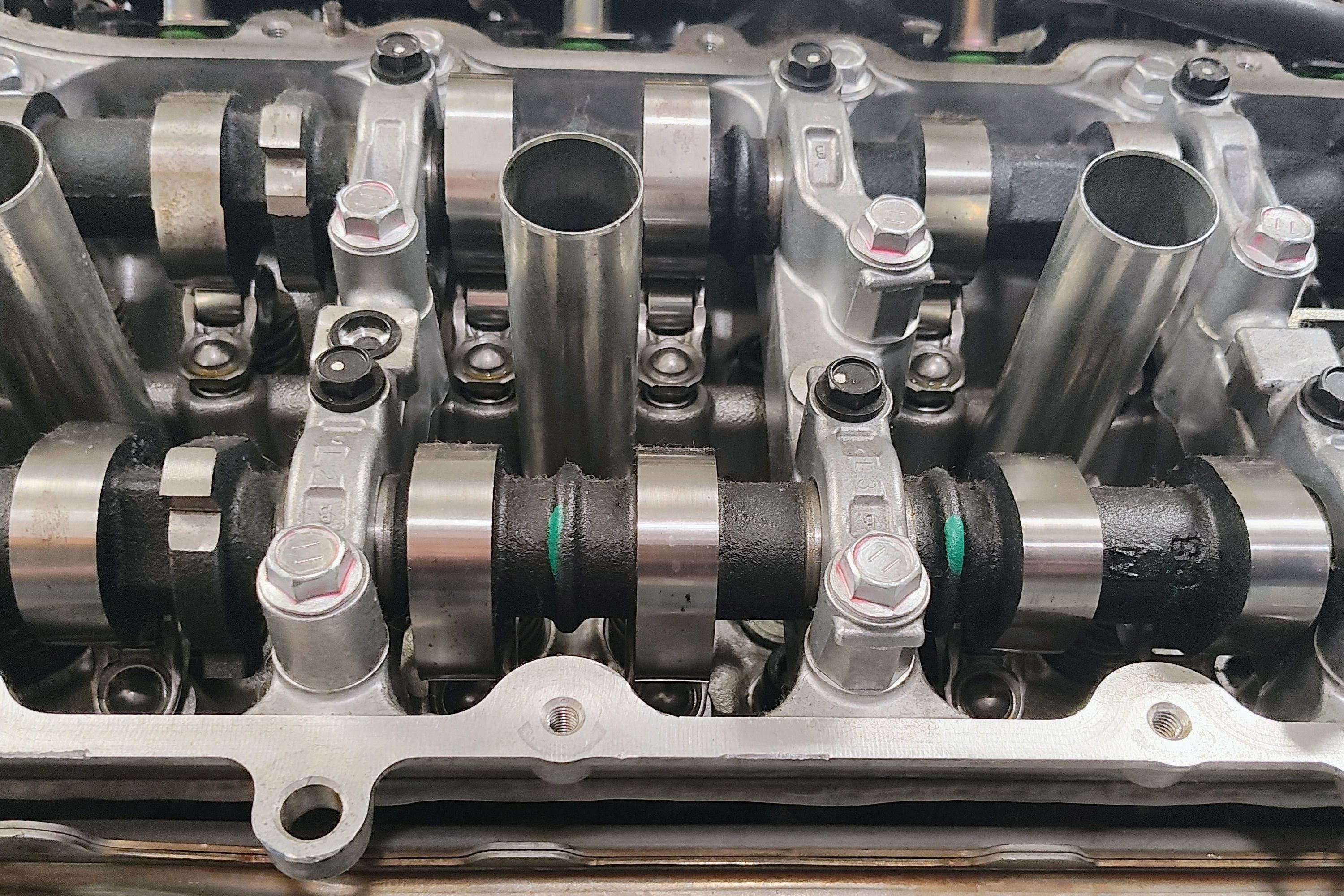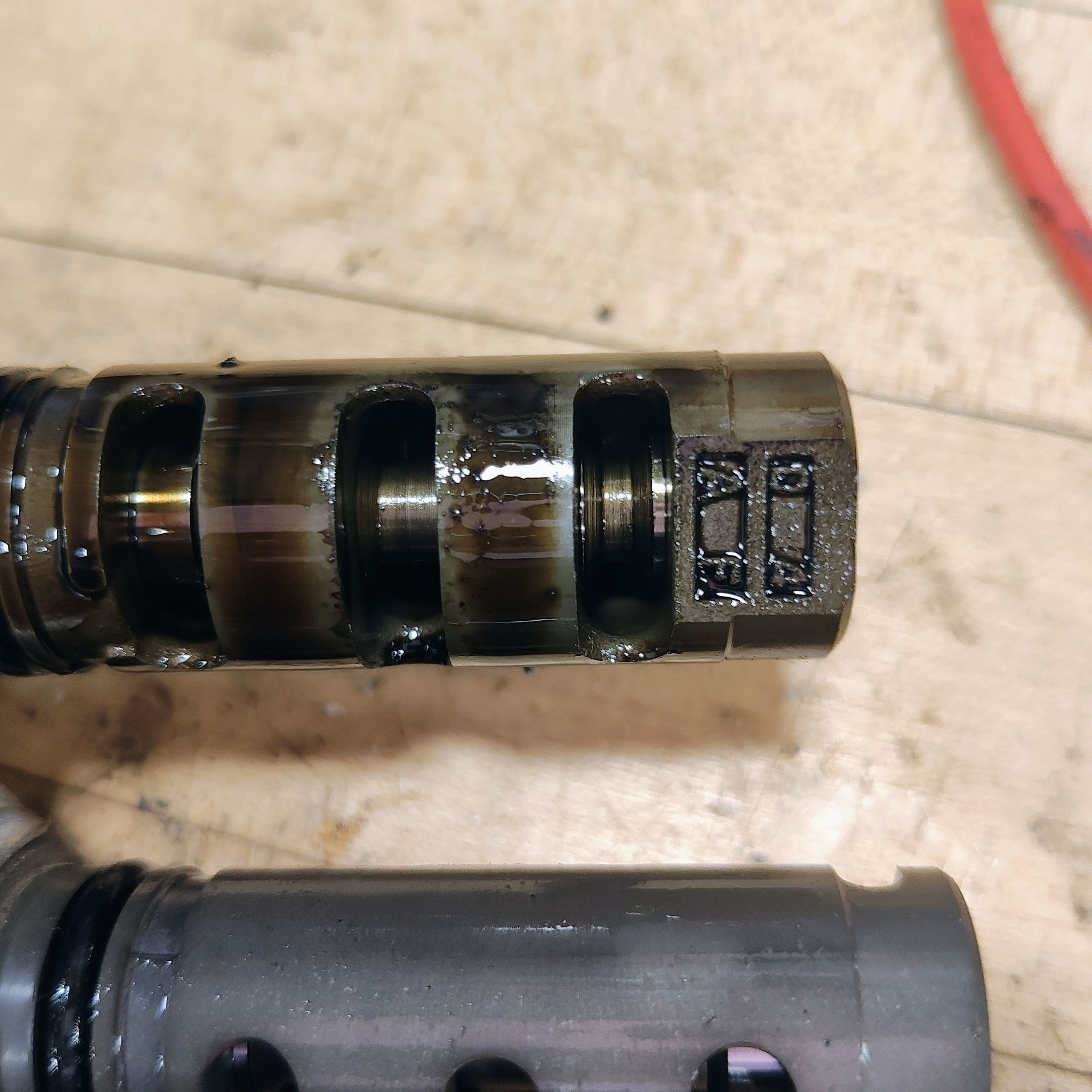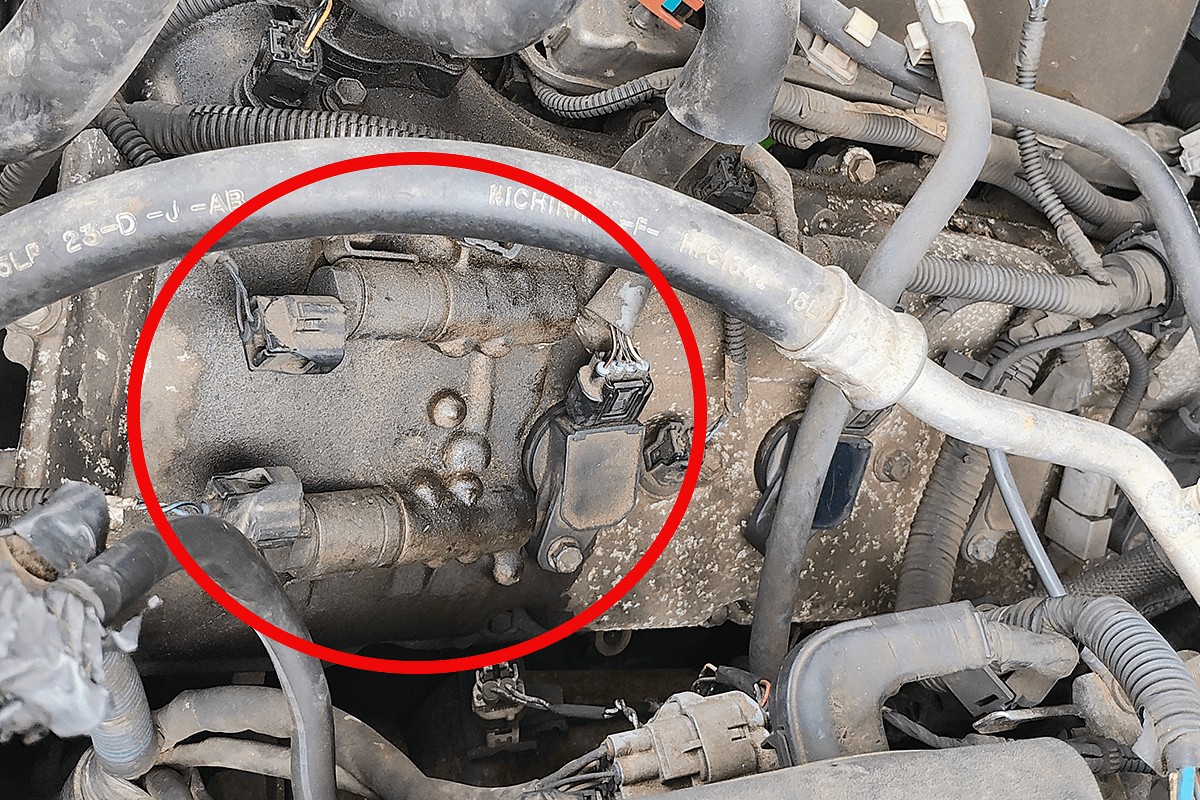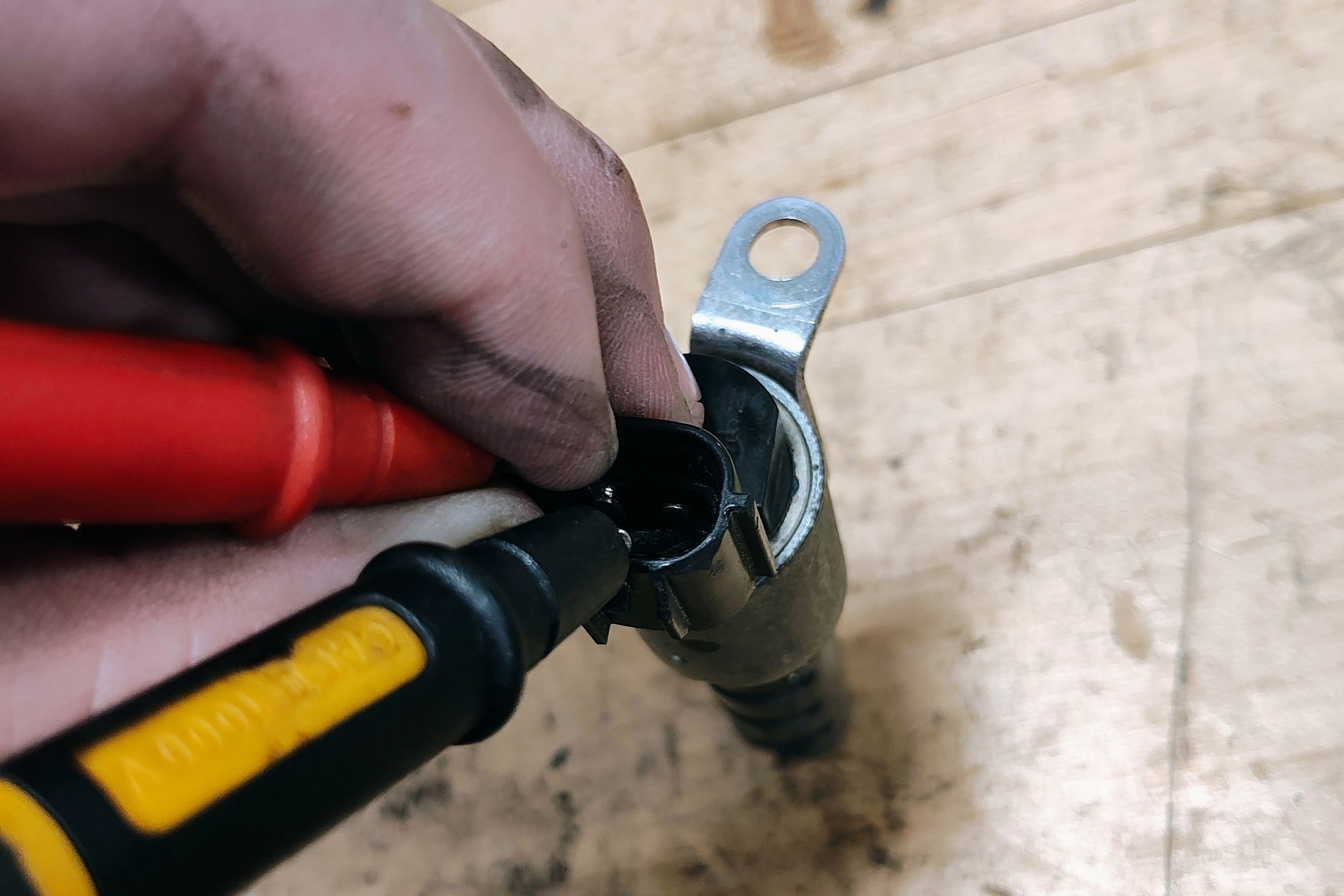Variable Valve Timing (VVT) technology is crucial in modern vehicles for optimizing engine performance and fuel efficiency. However, issues within the VVT system can trigger diagnostic trouble codes like P0014. This code, described as “Camshaft Position B – Timing Over-Advanced or System Performance (Bank 1),” points to a specific problem within your engine’s timing mechanism. Understanding this code is the first step in diagnosing and resolving potential engine issues.
While VVT might seem like a recent innovation, the concept dates back to the early 20th century. Cadillac even experimented with a manual valve timing system in 1903. Modern VVT systems, however, are far more sophisticated, utilizing computer-controlled oil flow to adjust valve timing dynamically through adjustable timing gears. Because these systems rely heavily on engine oil, maintaining your vehicle’s oil is paramount. In some cases, a simple oil change can resolve a P0014 error. However, more complex issues can also be at play. Let’s delve into the specifics of the P0014 code and how to address it.
| Code Number | Code Description | Related Codes |
|---|---|---|
| P0014 | Camshaft Position B* – Timing Over-Advanced or System Performance (Bank 1**) *Exhaust camshaft **Cylinder bank 1 | P0015 – Camshaft Position B – Timing Over-Retarded (Bank 1) P0024 – Camshaft Position B – Timing Over-Advanced (Bank 2) P0025 – Camshaft Position B – Timing Over-Retarded (Bank 2) |





Decoding the P0014 Error Code
The P0014 trouble code indicates a timing issue within the VVT system, specifically related to the exhaust camshaft in engine bank 1. “Bank 1” is crucial for V-type engines and is determined by the location of cylinder number one. Typically, if cylinder 1 is situated on the driver’s side of the engine, that cylinder bank is designated as “bank 1.” Always consult your vehicle’s service manual for precise bank identification to avoid misdiagnosis.
The engine’s Powertrain Control Module (PCM) constantly monitors camshaft positions using camshaft position sensors. The P0014 code sets when the PCM detects that the exhaust camshaft timing in bank 1 is excessively advanced or when the system cannot effectively control the camshaft’s timing position. This signifies a discrepancy between the desired and actual camshaft timing.
Potential Causes of the P0014 Code
Several factors can lead to a P0014 error code. From simple issues like low or dirty engine oil to more complex mechanical problems within the VVT system, pinpointing the exact cause is essential for effective repair. Here’s a breakdown of the common culprits:
- Incorrect Valve Timing: Mechanical timing issues, although less frequent, can cause this code.
- Defective Exhaust Timing Gear: Damage or wear in the exhaust timing gear can disrupt proper camshaft timing.
- Stretched or Worn Timing Chain: A stretched or worn timing chain can lead to inaccurate camshaft timing and trigger the P0014 code.
- Defective Oil Control Valve (OCV): The OCV regulates oil flow to the VVT actuator. A malfunctioning OCV is a common cause of P0014.
- Dirty OCV Filter: A clogged filter for the OCV can restrict oil flow and impair VVT system operation.
- Incorrect or Dirty Oil Filter: Using the wrong oil filter or a clogged filter can affect oil pressure and VVT performance.
- Dirty or Degraded Engine Oil: Old, dirty, or low engine oil can significantly impact the VVT system’s ability to function correctly. Dirty oil can clog small passages within the VVT system, and low oil levels can lead to insufficient pressure. Regular oil changes are vital for VVT system health.
- Incorrect Engine Oil: Using the wrong viscosity or type of engine oil can also interfere with VVT operation. Modern vehicles often require specific synthetic oils to ensure proper VVT performance.
- Faulty PCM: In rare cases, a malfunctioning PCM might incorrectly interpret sensor data and set the P0014 code.
- Faulty Camshaft Position Sensor: Although less likely to directly cause a timing over-advanced code, a failing camshaft position sensor can provide inaccurate readings to the PCM, potentially contributing to timing control issues.
Recognizing the Symptoms of a P0014 Code
When the P0014 code is present, you may observe several symptoms affecting your vehicle’s performance. These symptoms can range from subtle to noticeable and should not be ignored:
- Check Engine Light is Illuminated: This is the most obvious symptom. The malfunction indicator lamp (MIL), or check engine light, will turn on to alert you to a detected issue.
- Engine Stalling and Rough Idling: Improper camshaft timing can disrupt the engine’s combustion process, leading to stalling, particularly at idle, and a generally rough-running engine.
- Loss of Engine Power: Advanced exhaust camshaft timing when not needed can reduce engine efficiency and power output, especially during acceleration.
- Reduced Fuel Efficiency: An improperly timed engine is less efficient. You may notice a decrease in your vehicle’s miles per gallon (MPG).
- Unusual Engine Noise: Rattling or ticking noises from the engine bay could indicate timing chain or VVT system issues associated with the P0014 code.
- Cylinder Misfires: In severe cases, incorrect camshaft timing can cause cylinder misfires as the valves are not opening and closing at the optimal times for combustion.
Driving with a P0014 Error: Is it Safe?
While your car might still be drivable with a P0014 error, continuing to operate it in this condition can lead to significant engine damage. Modern engines are often “interference” engines, meaning that the pistons and valves can collide if the timing is significantly off.
Loss of synchronization between the camshaft and crankshaft, often caused by a stretched timing chain or a failing chain tensioner, is a serious concern. If the timing chain breaks due to wear or tensioner failure, catastrophic engine damage can occur as pistons strike valves. This can render the engine inoperable and necessitate expensive repairs or even engine replacement.
Therefore, if your vehicle displays a P0014 error code, prompt diagnosis and repair are crucial to prevent potential engine damage and costly repairs.
Troubleshooting and Repairing the P0014 Code
Fixing a P0014 error code involves systematic diagnosis and repair. Here’s a step-by-step approach to guide you through the process:
-
Verify the P0014 Code: Use an OBD-II scanner to confirm that the P0014 code is indeed present. Many auto parts stores offer free code scanning services.
-
Perform an Oil Change: The simplest and often most effective first step is to change your engine oil and filter. Ensure you use the correct type and viscosity of oil as specified in your owner’s manual and a high-quality oil filter. If the issue is related to dirty or degraded oil, a fresh oil change can sometimes resolve the P0014 code.
-
Inspect the Camshaft Position Sensor: While less likely to be the primary cause of a “timing over-advanced” code, a faulty sensor can still contribute to VVT issues. Testing the camshaft position sensor can help rule out sensor malfunction.
-
Oil Control Valve (OCV) Inspection and Test: The OCV is a prime suspect for P0014 errors. Inspecting and testing the OCV is a crucial step.
- Locate the OCV: OCVs are typically found on the cylinder head, often on the valve cover. V6 and V8 engines usually have multiple OCVs, one per camshaft. Consult your service manual for the exact location of the exhaust camshaft OCV for bank 1.
- Visual Inspection: Remove the OCV and carefully inspect it for any signs of damage, debris, or blockage.
- Resistance Test: Use a Digital Multimeter (DMM) to measure the OCV’s resistance. Typical resistance values range from 5 to 15 Ohms at room temperature (around 70°F or 21°C). Refer to your vehicle’s service manual for the specific resistance range for your OCV. Replace the OCV if the resistance is outside the specified range.
- Valve Position Check: Check if the OCV valve moves freely. A stuck or binding valve can cause timing issues.
-
Timing Component Inspection: If the above steps do not resolve the P0014 code, a more in-depth inspection of the timing components, such as the timing chain, timing gears, and tensioners, may be necessary. This often requires specialized tools and expertise and is best performed by a qualified mechanic.
Estimated Repair Costs for P0014
According to repair data, the most common fixes for the P0014 code include replacing the camshaft position sensor, replacing the OCV, and performing an engine oil and filter change.
- Oil Change: The average cost for an oil change ranges from $131 to $145, according to RepairPal. DIY oil changes can cost between $60 and $100, depending on the oil and filter quality.
- Camshaft Position Sensor Replacement: The average replacement cost for a camshaft position sensor is around $200 for many vehicles.
- Oil Control Valve (OCV) Replacement: OCV replacement typically costs between $300 and $400 on average.
Keep in mind that these are average estimates, and costs can vary depending on your vehicle’s make and model, labor rates in your area, and the specific parts used. Luxury vehicles, for example, often have higher parts and labor costs. For instance, replacing a camshaft position sensor on a BMW 2 Series 230i might exceed $320.
It’s crucial to address the P0014 code promptly to prevent potential engine damage. If you experience a noticeable decrease in engine performance or if other codes like P0300 (cylinder misfire) are present alongside P0014, seek professional diagnosis and repair immediately to avoid more extensive and expensive engine repairs.
Component Cost Estimates
| Component | Cost Estimate |
|---|---|
| Oil filter + five quarts of synthetic oil | ~$45 plus tax |
| Oil control valve | $40 – $150 |
| Camshaft position sensor | $60 – $150 |
